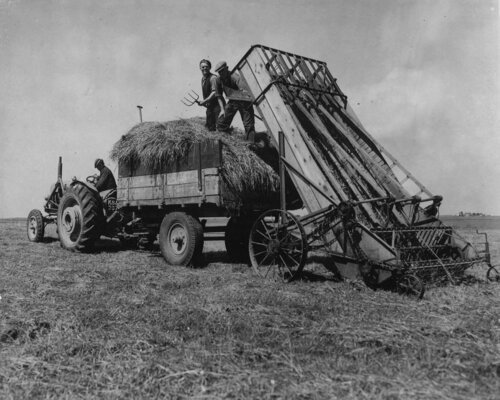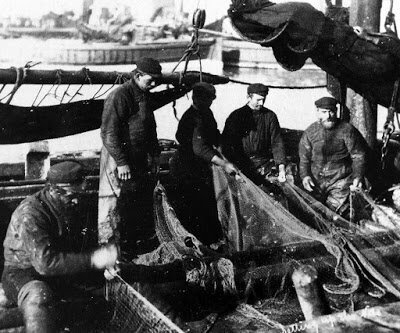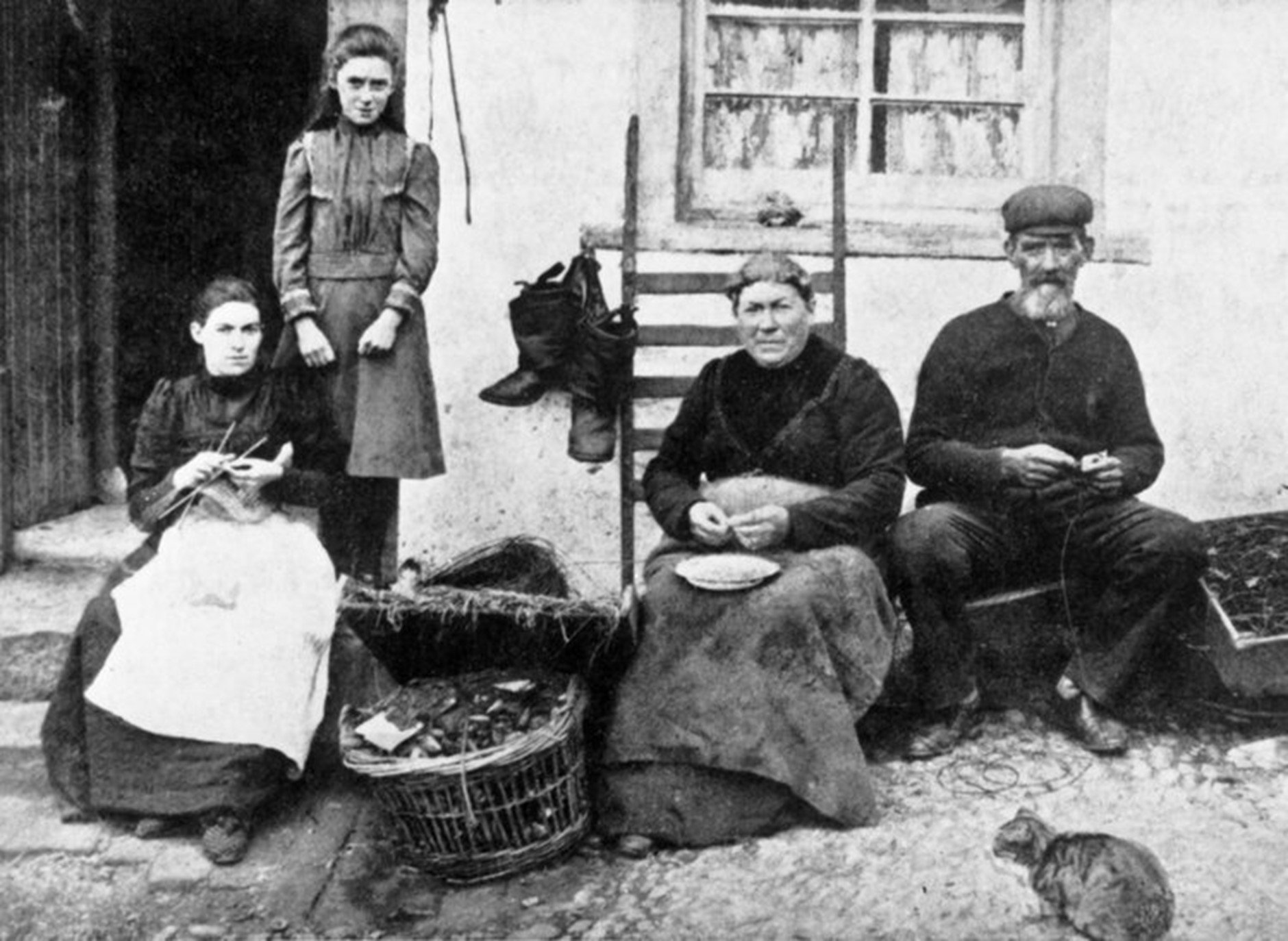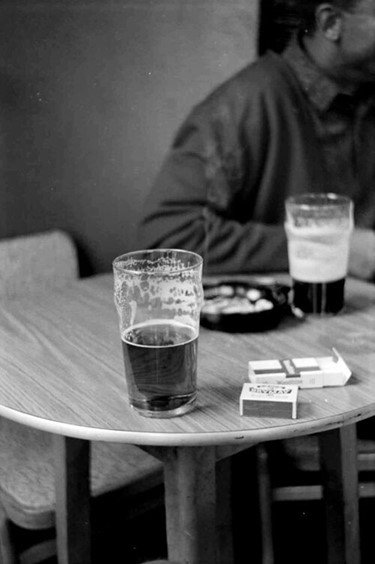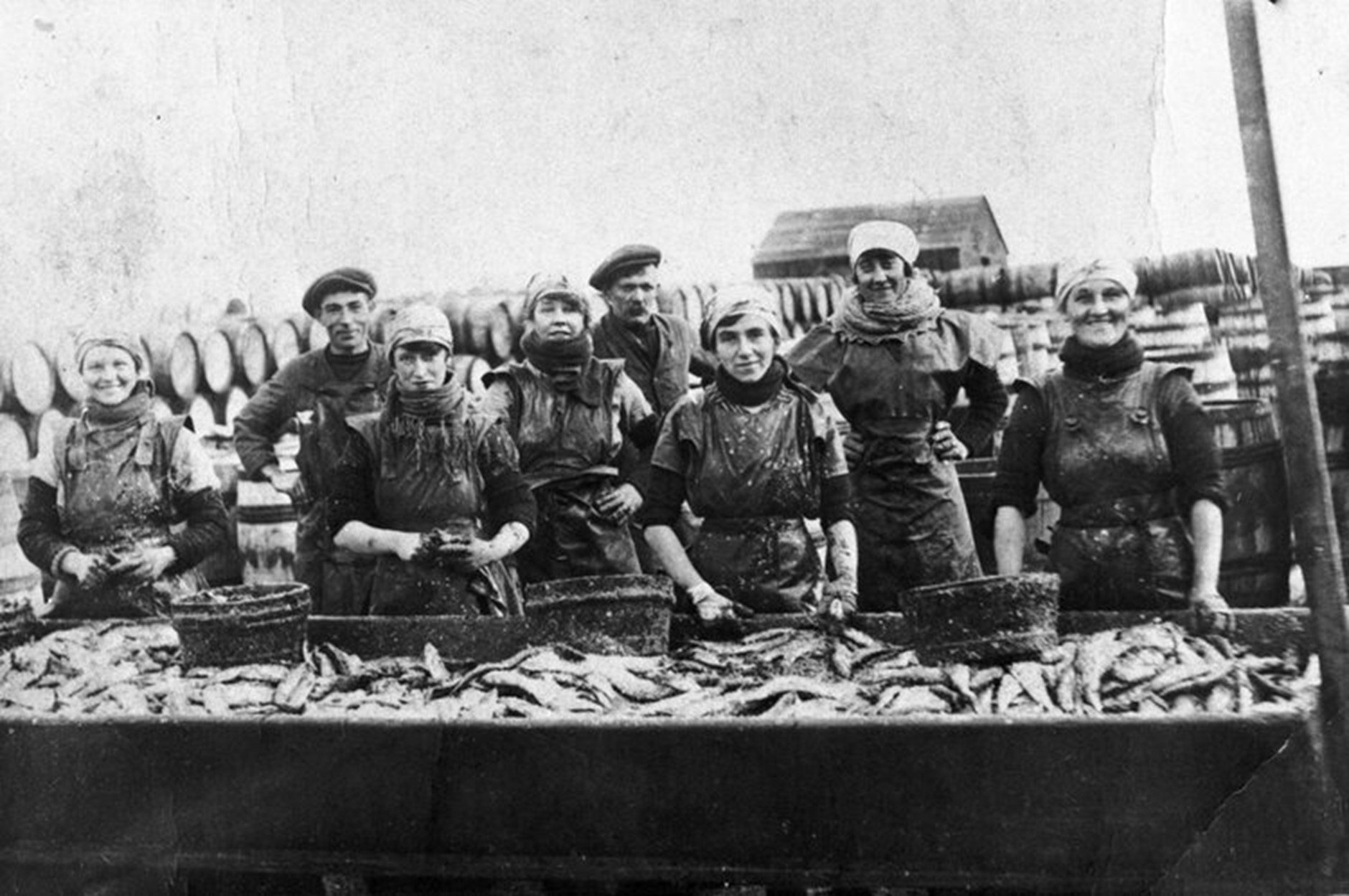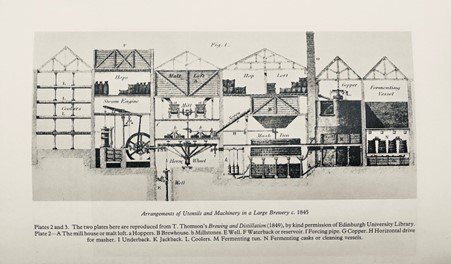History of Drink in the East Neuk: Part 1
By Jennifer Gordon
Crail harbour today, by Sean Dooley
The hedgerows and rocky crannies of the East Neuk of Fife set “a-hud” by a sinking sun on a winter’s afternoon resemble a small slice of paradise, sandwiched between cold earth and a colder sea. From our desk-based jobs in centrally heated homes and offices, the finger-freezing, back-breaking, bone-chilling realities of making a living from the fields and fishing grounds around us feel at comfortably fleeced-arm’s length.
That doesn’t stop us seeking our sustenance and soul-soothers though, and for my generation and that of my parents, this would probably have involved a fish supper and a toddle to a local pub of choice – The Haven, The Ship Tavern, The Salutation, The Masonic, The Royal Hotel, The Smugglers Inn, The Corner Bar, The West End to name but a few, legendary early adulthood haunts. Not to mention Christmas parties and wedding dances at the Craws Nest Hotel and the more “rustic” indulgence of sharing a bottle of white cider or Buckfast among the thorny scrub of Craw Hill Woods!
A few of these spirited public houses have withstood the huffings and puffings of the cruel wolf of change which has blown away, in a seemingly single breath, not only pubs but hotels and shops, and, in some less resilient towns, entire high streets.
But, ploughing further back into the furrows of time, how did our ancestors mark turning points in the year? From the end of a week to the end of the harvest, and the close of the herring season to a loved one’s final “crossing of the bar”.
Though there is no official record to refer to, it is generally assumed that Heather Ale was first produced by the Celtic Picts. Hops were not grown in Scotland but ale could be scented with gorse, heather or bog myrtle and heather ale was remarked on by the Greeks for its potency and consequent ability to render the most potent of hangovers.
A still rough, but milder beer was drunk daily throughout the medieval and early modern period. It was drunk by the whole family with all of the main meals of the day including breakfast. It was served in inns and taverns of course, but the Reverend James Melville even had a brewhouse built in his garden at the manse in Anstruther in the late 16th Century.
Depiction of a small brewery, like the many found in the East Neuk villages in the 17th century.
Earlier references to specific individual brewers, taverners or boozers are few but in ‘The East Neuk of Fife: It’s History and Antiquities’, Rev. Walter Wood of Elie records that in the early 14th century, Laurentius of Wormiston, the Constable of Crail, had the right to take 20 white fish each day from one boat for a penny, and from every boat coming to the town of Crail with ling, one ling at his choice for a penny. Also, from every brewer, one lagena and a half for a penny. (A lagena was a recognised measure for beer at this time which consisted of six sextarles and was, we think, around about a litre in today’s measurements).
At a tavern meeting for the Lairds of Kincraig, Advocates and Gentlemen at Marion Lucklay’s inn in Largo in 1664, the men drank ale. This was no doubt a civilised affair, but during this same period, along the road in Anstruther, locals were reputed to be some of the biggest drinkers on the coast.
In 1755, the vessel the Isabel & Mary (owned by Master John Duncan) was put into the harbour of Pittenweem and then promptly seized by collectors of contraband who claimed to have found liquor and beer. David Smith, a brewer in Leuchars, James Johnston, Treasurer of East Anstruther, merchants Archibald Johnston of Leuchars and George Hall of Crail were brought to trial but jury found the charges to be not proven.
Depiction of a larger brewery, like the reputable Argyle Brewery in St Andrews.
Fife was a significant brewing county by the 17th century with most towns and villages producing their own beer. Prosperous St Andrews was a long-established centre of malting and brewing and by 1700 there were 70 breweries there, and a further 100 breweries to be found across the East Neuk villages.
In Anstruther, three main malting and brewing sites included the mill on the Dreel Burn, the streets south of the Parish Church around School Green and Cunzie Street (the brewery on Cunzieburn was offered for sale by public group in 1836 and was eventually acquired in 1839 by John Russel for £1,500) and between Hadfoot Wynd, East Green and East Shore. At one point Cellardyke alone had 24 breweries but fluctuations in the fortunes of the local fishing fleet tended to be reflected in the resilience of these small businesses and only two or three survivals are listed by the end of the 18th century.
David Brown of Pittenweem, who died in 1804, was described as the “best malt man and ale brewer in Fife”. Such was the demand for malted barley in St Monans that a Mistress Mackie had a malt barn in Johnston’s Close, a building later known as “The Maltings”.
When it was near impossible to control the ambient temperature of traditional industrial buildings, malting (like brewing) was generally practiced in the winter months of October to May because germination, like fermentation, required a degree of coolness. The seasonal cycle of the land was therefore common to both activities.
Community rituals connected drinking establishments with the farming year as in many other parts of the country. For example, Malt Feasts were held in local ale houses where the farmers convened when the price of malt became due and spent part of it encouraging their customers to part with their pennies!
In the next instalment, we find out how a local Temperance movement tried to put a stop to the ‘hard drinking’ that was enjoyed by many in the small fishing and farming communities along the coast in the late 19th century. An interesting period to draw parallels with, given the current climate of pub lockdowns and curtailment of alcohol sales.
Jennifer Gordon is a Curator at the Scottish Fisheries Museum in Anstruther, and has published writing on the history of this area and its fishing fleets and communities in various forms. She is also one of our favourite singer-songwriters and has promised us that one day she will take up a mic again…


